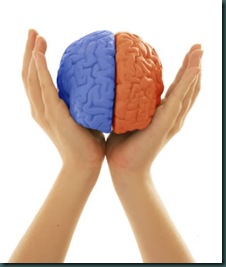Like most people who find something difficult, I dislike writing intensely, but with my job, it’s an inevitability that has to be endured.
I must confess to being very Dyslexic. I can’t spell for toffee; never could; and probably never will!
So why am I so grateful to be dyslexic and why would that make me a better designer?
First you have to ask your self, are you a left or right-brain person?
As an artist, you might think right, if you're an accountant, you might think left.
In reality, it's not really an either/or situation. Because each half of the brain tends to control certain kinds of thinking, its easy to categorise people as either one or the other.
Left Brain characteristics tend to be, Logical Sequential, Rational, Analytical, Objective.
While Right Brainers’ are considered Random Intuitive, Synthesizing, Subjective and Holistic
But while some people tend to use one side of the brain more than the other, the reality is that the two sides are dynamic and interactive.
When most of you are thinking and learning at your peak, you use your whole brain, switching freely between the halves. Dyslexics however tend to favour the right side over the left.
Traditional education has been overly focused on left-brain modes of thinking. Logic, sequences, and rote learning have been pushed, and the more creative "big picture" has been marginalized.
This is true for design teaching as well and may account for the sorry state of most student end of year exhibitions.
Look in most design/architecture books and you still see the old Survey, Analysis, Design or SAD method of teaching predominate. SAD because it often produces very SAD looking work .
At the Oxford College of Garden Design I teach the way I would have wanted to be taught myself. We study two styles of Design. The traditional SAD process and John Brookes’ Pattern Analysis.
Pattern Analysis is the polar opposite to SAD. It looks at shape and pattern based on geometrical theory and allocates the paces and lines with different materials.
As a dyslexic designer i don’t think about space allocation but art and pattern. I visualise the site as a whole, while creating a series on interlocking geometric shapes, then allocating each with one of the following materials: paving, lawn, water, or planting.
Pattern Analysis could easily be mistaken in the early stages of the design process, for a piece of modern art, such as that created by the 20th century French artist Mondrian.
The following video is an series of extracts from some of our lectures on design.
You will see the importance of understanding pattern and how shapes link together.
Finally we will reverse engineer two courtyard gardens to discover their underlying patterns and how they were created.
You may wish to watch the 800x600 version of this on Vimeo to fully appreciate the lesson
Please leave feed back here or feel free to ask questions.

